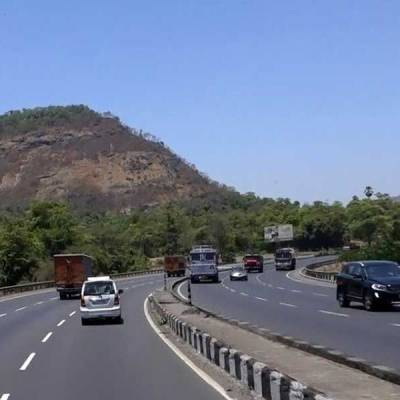- Home
- Infrastructure Transport
- ROADS & HIGHWAYS
- Next-gen quick-launch bridges are the need of the hour in India to save time and money, writes KK Kapila, Chairman, International Road Federation

Next-gen quick-launch bridges are the need of the hour in India to save time and money, writes KK Kapila, Chairman, International Road Federation
India has challenging ground conditions in places like Uttarakhand, Himachal Pradesh, Jammu & Kashmir and the northern and eastern parts of the country, which are prone to landslides and difficult terrains. New-generation, prefabricated, quick-launch bridges can play a major role in augmenting infrastructure in these areas as well as forward defence areas.<br /> <br /> The innovative technique of building a large number of bridges in a short span of time at low cost in the sector is fast picking up across the world. In countries like the US, China, Japan, France, Germany, Netherlands and Belgium, this technique of building bridges is widely used. Focus should be given to using modern techniques for improvement of conventional bridges in the country, which form the majority.<br /> <br /> <span style="font-weight: bold;">The Indian scenario</span><br /> The Indian road network consists of more than 1 lakh bridges. Similarly, more than 30,000 bridges on the Indian Railways network are more than 100 years old. Thus, the evolution of technologies that facilitate quick construction of bridges on a running line is the need of the hour.<br /> <br /> The fact that new-generation quick-launch bridges are expensive is a myth, and needs to be corrected. The infrastructure sector can definitely take advantage of these bridges in India - the rest of the world is already doing so. <br /> <br /> In emergencies and where we need to save time, these new-generation bridges are far superior and more cost-effective than the bailey bridges used at present. Decision-makers and users must see beyond the L-1 approach in finding solutions, and compare the advantages in a more holistic manner. They will then realise that the long-term savings are much more than the small price difference at purchase. For this, one needs to clearly understand the technical aspects and the long-term advantages.<br /> <br /> <span style="font-weight: bold;">Versatile and modular bridges</span><br /> The bailey bridge stocked by most government organisations, including the Public Works Department (PWD), is primarily for emergencies. Recently, the foot-over-bridge constructed at Elphinstone Station, Mumbai, was in the news with Army engineers receiving acclaim for their speedy work. Such quick-launch bridges are handy when there is time pressure, such as during disasters when key areas are cut off or to speed up a project where time is adversely affecting the cost. They are also handy for projects in difficult terrain, where approach to the work site is critical as is the need for its extensive use and stocking.<br /> <br /> These bridges are used as temporary bridges as they are easily launched and de-launched and can be reused. They are versatile, being modular and easy to carry, and can be launched with restricted construction space. On the other hand, the bailey bridge, which is of World War II vintage, has its limitations.<br /> <br /> <span style="font-weight: bold;">Meeting loading requirements</span><br /> The limitations of the bailey bridge are that it was designed as a temporary or at best a semi-permanent bridge with a life of 20 years. The roadway is limited to a maximum of 4.2 m, allowing only a single lane. For spans up to 60 m, it can be constructed to a load class of 30 tonne, whereas National Highways (NHs) require 70 R and single-wheeled load trains up to 100 tonne with a minimum roadway of 5.3 m. Thus, the bailey is grossly inadequate and is used with load restrictions, choking the NHs, restricting both traffic flow and loads. This affects optimal utilisation of double-lane NHs, leading to higher transportation costs, a larger carbon footprint and lower safety standards. Many of these bridges have collapsed owing to overloading, not meeting the aspirations of the locals who want to utilise the NHs to their full capacity to derive commercial benefits and fast-track development activities. Yet, the only option we seem to have is to launch the same bridge where there is an emergency and hope for the best.<br /> <br /> In an emergency situation owing to the collapse of a 36-m span bailey bridge in June 2015 in Sonprayag, causing the route to Kedarnath to be cut off, a bold decision was taken to launch a permanent bridge in time for the Yatra to the shrine: A longer span, Class 70 R Acrow Bridge. This proved to be a permanent and more cost-effective solution and return on the investment accrued the same year, allowing the Yatra to take place in April 2016. <br /> <br /> The related commercial activity for the locals was a boon and many times beyond the cost of the bridge. Indeed, the advantages of the Acrow Bridge, a permanent bridge launched quickly, are manifold. <br /> <br /> <span style="font-weight: bold;">Cost-effectiveness</span><br /> Quick-launch bridges have a life of 75-100 years; the galvanised steel is good for 75 years before it even starts to deteriorate. They can be launched to road widths varying from 3.7 m to 14.6 m, allowing four to five lanes as required. They allow loads up to IRC 70 R or even 150 MLC as used by the US Army. They have also been used as rail bridges and for a number of other applications. With all the advantages of a permanent bridge, the added ability to launch or de-launch quickly allows them to be used multiple times, even as a temporary bridge. All this has to be factored when we compare costs with other bridges. Else, it will be a flawed comparison.<br /> <br /> The prominent factors that need to be compared for cost are:<br /> <br /> The per-square-metre cost is more realistic than absolute cost. This will allow for lanes wider than the maximum of the bailey bridge (its maximum width, 4.2 m, is below specifications for 70 R).<br /> <br /> <span style="font-weight: bold;">Live load factor:</span> When a bridge allows 100 tonne and is compared to a bridge that can take only 30 tonne, the cost per tonne of load is a more apt and logical comparison.<br /> <br /> Life-cycle cost includes the initial cost with the maintenance cost, computed to give a cost on an annual basis. When comparing a temporary bridge with a life of 20 years with a permanent bridge with nearly zero maintenance, the initial costs are grossly misleading; the long-term savings are huge, almost three times.<br /> <br /> Commercial advantage. This is the advantage of quick launch in, say, three to six months depending on the time to prepare abutments and move the equipment to site. When compared against one to two years for a regular bridge, it may be even three years for spans of 60 m; the cascading effect on commercial activity is pertinent. Any delay holds up commercial activity and affects the morale of the locals. These factors are normally overlooked as they are difficult to quantify. Actually, it could be more than 20-30 times the cost of the bridge. A decision-maker has to account for this aspect; otherwise, it will not be in sync with local needs. This has carried on long enough and needs to change.<br /> <br /> <span style="font-weight: bold;">Win-win for concessionaires and authorities</span><br /> The new-generation quick-launch bridges can easily prove to be cost-effective in the long run vis-a-vis the existing solution for emergencies. We need to stock these bridges so that they can be delivered and erected within a month in an emergency. The bridge would be to IRC standards, safe and permanent. It can also be used for routine construction where time saving will offset any difference in initial cost. For a concessionaire, early completion, collecting toll and avoiding penalty could be a factor to consider such bridges. It is actually a win-win for both the concessionaire and the authorities in such cases.<br /> <br /> Another use is the replacement of existing bridges with minimum delay, either to upgrade from single to double-lane bridges or to change a bridge because the existing bridge is weak, by resorting only to temporary detours and using the same site. With the extensive survey of bridges undertaken by the Ministry of Road Transport and Highways, the need for this will grow. It is time we looked at workable options to save time and avoid inconvenience to the public.<br /> <br /> Evidently, we need to be more realistic in comparing costs and take advantage of good technology. Once the need is recognised, demand will grow and such bridges can be "Made in India" in the near future. Ultimately, bridge solutions have to be simple with the right priorities. We need to demand better, safer bridges and fast construction, shaking off the "chalta hai" attitude of accepting unsafe bridges that also lead to under-utilisation of the NHs.<br /> <br /> <span style="font-weight: bold;">About the author:</span> <br /> KK Kapila is the Chairman of the International Road Federation (IRF), a Geneva-based global body working for better and safer roads worldwide. He is the first non-European to be elected as Chairman of IRF. Kapila is also the Co-Chairman of FICCI Transport Infrastructure Committee.<br />



















